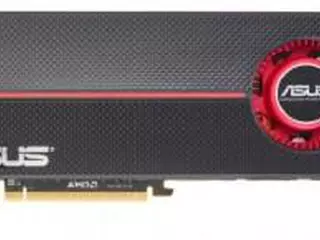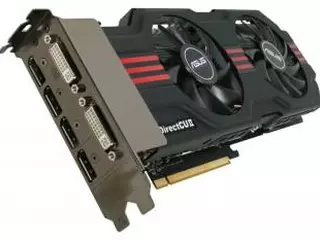Radeon HD 5870 vs Radeon HD 6950
Find out if it is worth upgrading your current GPU setup by comparing Radeon HD 5870 and Radeon HD 6950. Here you can take a closer look at graphics cards specs, such as core clock speed, memory type and size, display connectors, etc. The price, overall benchmark and gaming performances are usually defining factors when it comes to choosing between Radeon HD 5870 and Radeon HD 6950. Make sure that the graphics card has compatible dimensions and will properly fit in your new or current computer case. Also these graphics cards may have different system power recommendations, so take that into consideration and upgrade your PSU if necessary.
Main Specs
Radeon HD 5870
Radeon HD 6950
Power consumption (TDP)
188 Watt
500 Watt
Interface
PCIe 2.0 x16
PCIe 2.0 x16
Supplementary power connectors
2x 6-pin
2x 6-pin
Memory type
GDDR5
GDDR5
Maximum RAM amount
1 GB
2 GB
Display Connectors
2x DVI, 1x HDMI, 1x DisplayPort
2x DVI, 1x HDMI, 2x mini-DisplayPort
Check Price
Check Price
Radeon HD 6950 has 165% more power consumption, than Radeon HD 5870.
Both video cards are using PCIe 2.0 x16 interface connection to a motherboard.
Radeon HD 6950 has 1 GB more memory, than Radeon HD 5870.
Both cards are used in Desktops.
Radeon HD 5870 is build with TeraScale 2 architecture, and Radeon HD 6950 - with TeraScale 3.
Radeon HD 5870 and Radeon HD 6950 are manufactured by 40 nm process technology.
Radeon HD 5870 is 15 mm longer, than Radeon HD 6950.
Memory clock speed of Radeon HD 5870 is 3550 MHz higher, than Radeon HD 6950.
Game benchmarks
Assassin's Creed Odyssey
Battlefield 5
Call of Duty: Warzone
Counter-Strike: Global Offensive
Cyberpunk 2077
Dota 2
Far Cry 5
Fortnite
Forza Horizon 4
Grand Theft Auto V
Metro Exodus
Minecraft
PLAYERUNKNOWN'S BATTLEGROUNDS
Red Dead Redemption 2
The Witcher 3: Wild Hunt
World of Tanks
high / 1080p
10−12
14−16
ultra / 1080p
6−7
8−9
QHD / 1440p
1−2
3−4
low / 720p
24−27
27−30
medium / 1080p
14−16
16−18
The average gaming FPS of Radeon HD 6950 in Assassin's Creed Odyssey is 27% more, than Radeon HD 5870.
high / 1080p
18−20
21−24
ultra / 1080p
16−18
18−20
QHD / 1440p
1−2
5−6
4K / 2160p
−
5−6
low / 720p
35−40
45−50
medium / 1080p
20−22
24−27
The average gaming FPS of Radeon HD 6950 in Battlefield 5 is 26% more, than Radeon HD 5870.
low / 768p
45−50
45−50
QHD / 1440p
0−1
0−1
Radeon HD 5870 and Radeon HD 6950 have the same average FPS in Call of Duty: Warzone.
low / 768p
180−190
200−210
medium / 768p
150−160
170−180
ultra / 1080p
75−80
90−95
QHD / 1440p
45−50
50−55
4K / 2160p
30−33
30−33
high / 768p
110−120
130−140
The average gaming FPS of Radeon HD 6950 in Counter-Strike: Global Offensive is 13% more, than Radeon HD 5870.
low / 768p
55−60
55−60
ultra / 1080p
30−35
35−40
medium / 1080p
45−50
45−50
The average gaming FPS of Radeon HD 6950 in Cyberpunk 2077 is 4% more, than Radeon HD 5870.
low / 768p
95−100
100−110
medium / 768p
80−85
90−95
ultra / 1080p
50−55
60−65
The average gaming FPS of Radeon HD 6950 in Dota 2 is 11% more, than Radeon HD 5870.
high / 1080p
12−14
16−18
ultra / 1080p
12−14
14−16
4K / 2160p
5−6
6−7
low / 720p
30−33
35−40
medium / 1080p
14−16
18−20
The average gaming FPS of Radeon HD 6950 in Far Cry 5 is 26% more, than Radeon HD 5870.
high / 1080p
20−22
21−24
ultra / 1080p
14−16
18−20
QHD / 1440p
−
16−18
low / 720p
80−85
90−95
medium / 1080p
35−40
45−50
The average gaming FPS of Radeon HD 6950 in Fortnite is 15% more, than Radeon HD 5870.
high / 1080p
18−20
24−27
ultra / 1080p
16−18
18−20
QHD / 1440p
5−6
8−9
low / 720p
40−45
45−50
medium / 1080p
21−24
27−30
The average gaming FPS of Radeon HD 6950 in Forza Horizon 4 is 19% more, than Radeon HD 5870.
low / 768p
70−75
80−85
medium / 768p
60−65
70−75
high / 1080p
21−24
27−30
ultra / 1080p
9−10
10−12
QHD / 1440p
0−1
2−3
The average gaming FPS of Radeon HD 6950 in Grand Theft Auto V is 17% more, than Radeon HD 5870.
high / 1080p
7−8
9−10
ultra / 1080p
5−6
7−8
4K / 2160p
1−2
2−3
low / 720p
21−24
27−30
medium / 1080p
10−11
12−14
The average gaming FPS of Radeon HD 6950 in Metro Exodus is 33% more, than Radeon HD 5870.
low / 768p
100−110
110−120
ultra / 1080p
95−100
100−110
medium / 1080p
100−110
100−110
The average gaming FPS of Radeon HD 6950 in Minecraft is 5% more, than Radeon HD 5870.
high / 1080p
20−22
21−24
ultra / 1080p
16−18
16−18
low / 720p
45−50
50−55
medium / 1080p
21−24
21−24
The average gaming FPS of Radeon HD 6950 in PLAYERUNKNOWN'S BATTLEGROUNDS is 3% more, than Radeon HD 5870.
high / 1080p
12−14
14−16
ultra / 1080p
8−9
9−10
QHD / 1440p
0−1
0−1
low / 720p
21−24
24−27
medium / 1080p
14−16
14−16
The average gaming FPS of Radeon HD 6950 in Red Dead Redemption 2 is 14% more, than Radeon HD 5870.
low / 768p
40−45
50−55
medium / 768p
24−27
30−35
high / 1080p
14−16
16−18
ultra / 1080p
9−10
10−11
4K / 2160p
7−8
8−9
The average gaming FPS of Radeon HD 6950 in The Witcher 3: Wild Hunt is 20% more, than Radeon HD 5870.
low / 768p
95−100
100−105
medium / 768p
55−60
60−65
ultra / 1080p
27−30
30−35
high / 768p
45−50
50−55
The average gaming FPS of Radeon HD 6950 in World of Tanks is 8% more, than Radeon HD 5870.
Full Specs
Radeon HD 5870
Radeon HD 6950
Architecture
TeraScale 2
TeraScale 3
Code name
Cypress
Cayman
Type
Desktop
Desktop
Release date
23 September 2009
14 December 2010
Pipelines
1600
1408
Core clock speed
850 MHz
Boost Clock
800 MHz
Transistor count
2,154 million
2,640 million
Manufacturing process technology
40 nm
40 nm
Texture fill rate
68.00
70.40
Floating-point performance
2,720.0 gflops
2,252.8 gflops
Length
282 mm
267 mm
Memory bus width
256 Bit
256 Bit
Memory clock speed
4800 MHz
1250 MHz
Memory bandwidth
153.6 GB/s
DirectX
11.2 (11_0)
Shader Model
5.0
5.0
OpenGL
4.4
4.4
OpenCL
1.2
1.2
Vulkan
N/A
Bus support
PCIe 2.0 x16
HDMI
+
Bitcoin / BTC (SHA256)
244 Mh/s
Eyefinity
+
Design
reference
CrossFire
+
Check Price
Check Price

